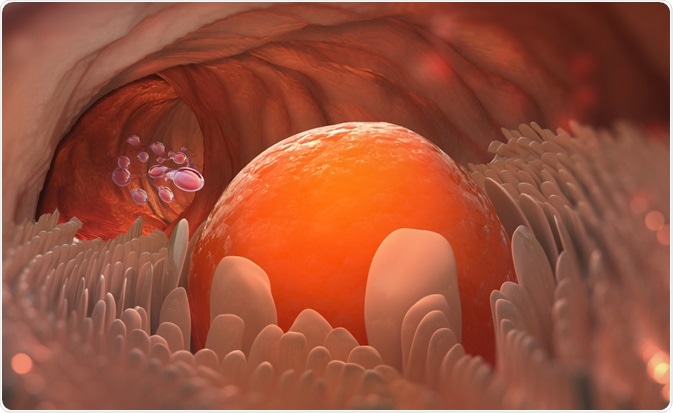The typical menstrual cycle of a woman lasts approximately 28 days, although this varies greatly between each woman. The first day of the menstrual cycle is considered to be the first day of menstruation when the endometrial lining is shed.

Image Credit: Yurchanka Siarhei / Shutterstock.com
There are distinct periods in the monthly cycle of every woman, during which important events happen to allow the woman to be fertile and possibly conceive a child. The follicular phase is the first to occur in the cycle, after which ovulation occurs. For the remaining time, the luteal phase takes place until the cycle begins again.
Each of these processes occurs as a result of hormones controlled by the hypothalamus that are secreted by the anterior lobe of the pituitary gland. The luteinizing hormone (LH) and follicle-stimulating hormone (FSH) are two particularly important hormones for the menstrual cycle.
Follicular phase
Also known as the proliferative phase, the follicular phase spans from the beginning of menstruation to ovulation and is the period during which the follicles in the ovaries mature.
For successful ovulation, both corona radiate and cumulus oophorous granulosa cells need to support the egg. Cumulus expansion involves proliferation and mucification of these cells, with the secretion of a hyaluronic acid-rich substance. This substance then mixes into the cell network to form a sticky matrix around the egg, which has been shown to be necessary for fertilization.
The number of cumulus cells also increases and causes a rise in the volume of antrum fluid. As a result, the follicle swells in size to over 20 millimeters (mm) in diameter, forming a bulge at the surface of the ovary, which is referred to as the blister.
Towards the end of this phase, estrogen levels reach their peak, which precipitates the hormonal changes needed to begin ovulation.
Ovulation
As a result of the estrogen peak, a sudden surge of LH and FSH hormones is released from the pituitary gland.
This typically lasts for 1 to 2 days, before the follicle erupts and releases the egg from the ovary by way of the oviduct. The release of the egg occurs due to LH, which causes the follicle to secrete proteolytic enzymes that weaken the tissue near the blister of the follicle, eventually forming a hole called the stigma.
The egg surrounded by the cumulus cells, known as the cumulus-oocyte complex, then travels into the peritoneal cavity and connects to the fimbriae at the end of the fallopian tube. Pushed along the tube by cilia, the egg slowly travels towards the uterus.
At the same time, the egg undergoes meiosis I to form two separate cells, one that contains the cytoplasmic material and one inactive polar body.
Meiosis II then occurs but does not complete, as the egg remains in metaphase until fertilization. If it is not fertilized, the egg will degenerate within 24 hours. At this point, the uterine mucous membrane known as the functionalis is at its maximum size with endometrial glands that are still non-secretory.
Pregnancy, The process of Ovulation, Fertilization and Implantation
Luteal phase
In this phase, the follicle meets the end of its lifespan. Without the presence of the egg, the follicle collapses in on itself to form the corpus luteum, which is able to produce the hormones estrogen and progesterone.
These hormones induce the production of the proliferative endometrium by the endometrial glands, which is where the embryo will grow if implantation occurs.
The basal body temperature increases slightly due to the presence of progesterone. For the remainder of the menstrual cycle, the endometrium is maintained by the paracrine action of the corpus luteum.
The cycle ends when the endometrium disintegrates into scar tissue and menstruation begins, signaling the beginning of the follicular phase.
References
Further Reading
Last Updated: Sep 7, 2022